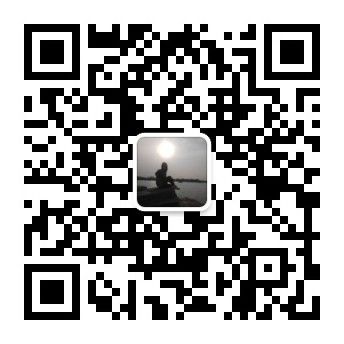蓝牙API介绍及基本功能实现
本文已授权微信公众号<<码农修仙儿>>独家发布
ONE,传统蓝牙
- BluetoothAdapter:本地蓝牙设备适配器,用于管理蓝牙的开启/关闭、重命名、扫描、配对、连接
- BluetoothClass:蓝牙设备类,用于描述蓝牙设备类型
- BluetoothDevice:远程蓝牙设备类
- BluetoothSocket:与tcpSocket类似,进行蓝牙连接
- BluetoothServerSocket:与tcpServerSocket类似,等待连接
获取本地蓝牙适配器
BluetoothAdapter adapter = BluetoothAdapter.getDefaultAdapter();
打开/关闭本地蓝牙
adapter.enable();//打开蓝牙
adapter.disable();//关闭蓝牙
adapter.isEnabled();//蓝牙是否处于开启状态
adapter.getState();//获取本机蓝牙状态
通过监听BluetoothAdapter.ACTION_STATE_CHANGED监听蓝牙状态的改变
蓝牙重命名/获取本机蓝牙名
mAdapter.setName(name);//本地蓝牙重命名
mAdapter.getName();//获取本机蓝牙名通过监听BluetoothAdpater.ACTION_LOCAL_NAME_CHANGED监听本机蓝牙名称的改变
蓝牙可检测性设置
有两种方案,
首先第一种实现,简单但对可检测时间有限制
Intent intent = new Intent(BluetoothAdapter.ACTION_REQUEST_DISCOVERABLE);
//默认可检测时间为120秒,调用该方法最高可设置300秒
intent.putExtra(BluetoothAdapter.EXTRA_DISCOVERABLE_DURATION, 300);
startActivity(intent);
第二种实现方案,就是Android源码中的实现方案,可以任意规定可检测时长,甚至永不超时均可(参考Android4.42源码)
/**
*mode有三种取值
*BluetoothAdapter.SCAN_MODE_CONNECTABLE:对已配对设备可见,具有扫描功能
*BluetoothAdapter.SCAN_MODE_NONE:对所有设备不可见,不具有扫描功能
*BluetoothAdapter.SCAN_MODE_CONNECTABLE_*DISCOVERABLE:对所有设备可见,具有扫描功能
*duration为扫描时长
*/
mAdapter.setScanMode(mode, duration);
//设置alarm,当timeout结束时就关闭蓝牙的可检测性
BluetoothDiscoverableTimeoutReceiver.setDiscoverableAlarm(mContext, endTimestamp);
这是源码中的实现方案,但是BluetoothAdapter.setScanMode()没有办法去调用,只能利用反射
获取已配对设备列表
List list = (List) adapter.getBondedDevices();
开启扫描/关闭扫描
adapter.startDiscovery();//开启蓝牙扫描功能
adapter.cancelDiscovery();//关闭蓝牙扫描功能在扫描到设备时系统会发送BluetoothDevice.ACTION_FOUND的广播,通过监听该广播可以获取到设备信息
获取到设备后调用如下方式进行连接
BluetoothSocket _BluetoothSocket = device.createInsecureRfcommSocketToServiceRecord(MY_UUID);
获取到socket后可以获取到输入输出流,这里的uuid可以在网页的uuid生成器在线生成,remotedevice和本机蓝牙设备的uuid必须相同
TWO,BLE低功耗蓝牙
获取蓝牙适配器的步骤同上,扫描ble设备的方法如下:
//开启蓝牙扫描
mBluetoothAdapter.startLeScan(mLeScanCallback);
//结束蓝牙扫描
mBluetoothAdapter.stopLeScan(mLeScanCallback);
其中mlLeScanCallback为BluetoothAdapter.LeScanCallback对象,
private BluetoothAdapter.LeScanCallback mLeScanCallback =
new BluetoothAdapter.LeScanCallback() {
@Override
public void onLeScan(final BluetoothDevice device, int rssi, byte[] scanRecord) {
。。。
//扫描到设备后回调
}
扫描到设备后可以进行连接,方法如下
mBluetoothGatt = mBluetoothDevice.connectGatt(BluetoothCODAService.this, false, mGattCallback);
其中mGattCallback为BluetoothGattCallback对象
private final BluetoothGattCallback mGattCallback = new BluetoothGattCallback() {
@Override
public void onConnectionStateChange(BluetoothGatt gatt, int status, int newState) {
if(newState == BluetoothProfile.STATE_CONNECTED){
//连接成功回调
}else if(newState == BluetoothProfile.STATE_DISCONNECTED){
//连接失败回调
}
public void onServicesDiscovered(BluetoothGatt gatt, int status) {
if (status == BluetoothGatt.GATT_SUCCESS) { // 0
//搜索到服务回调
} else {
//未搜索到服务回调
}
}
@Override
// Result of a characteristic read operation
public void onCharacteristicRead(BluetoothGatt gatt, BluetoothGattCharacteristic characteristic, int status) {
if (status == BluetoothGatt.GATT_SUCCESS) {
//接收到数据回调
}
}
@Override
public void onCharacteristicWrite(BluetoothGatt gatt,BluetoothGattCharacteristic characteristic, int status) {
//发送数据回调
}
@Override
public void onCharacteristicChanged(BluetoothGatt gatt, BluetoothGattCharacteristic characteristic) {
}
@Override
public void onDescriptorRead(BluetoothGatt gatt, BluetoothGattDescriptor descriptor,
int status) {
}
@Override
public void onDescriptorWrite(BluetoothGatt gatt, BluetoothGattDescriptor descriptor,
int status) {
}
@Override
public void onReliableWriteCompleted(BluetoothGatt gatt, int status) {
}
};
}
连接成功后如果要进行通信还必须搜索服务
mBluetoothGatt.discoverServices();
搜索服务后会回调onServicesDiscovered方法。
至此,就可以进行读写数据了
//读数据
mBluetoothGatt.readCharacteristic(characteristic);
//写数据
mBluetoothGatt.writeCharacteristic(characteristic,value);
关于低功耗蓝牙的理论知识可以参考 Android蓝牙BLE低功耗相关简单总结
鉴于多人私信我要蓝牙demo,索性直接上传资源,我整理了一篇低功耗相关的,连接设备并读取数据,附上demo的下载地址,供大家参考
http://download.csdn.net/detail/zrf1335348191/9525847
欢迎关注我的微信公众号:
